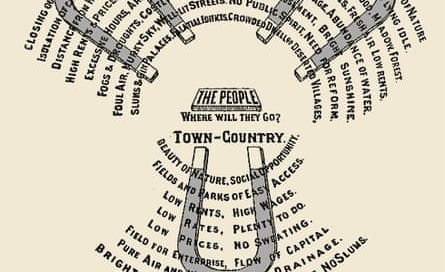A roundabout way to utopia
This week's guest post is from writer and broadcaster Nicky Woolf, on the utopian vision behind garden cities.
I went to school right next to the world’s first roundabout.
It’s not that impressive, actually, as roundabouts go. Compared to those you get in, say, Milton Keynes – a city of 288,000 people which, with 300, has more than one roundabout for every thousand residents, including the ginormous “magic” roundabout, a dozen lanes of traffic gyrating around a pentagon with a smaller roundabout at each point.
Here’s a good pub trivia fact: Milton Keynes is the largest city in the UK that does not have a city in America named after it. That makes sense, to be honest, because it’s basically brand new. It was created in 1970 with the express aim of being a city designed for cars. “Unrestricted traffic flow” was the term they used.
This has a huge number of problems which Dan Knowles, who guest-posted this newsletter a couple of weeks ago, goes into exquisitely in his book Carmageddon, from which you’ve already read an extract but I thought I’d plug again nevertheless.
Anyway, this is a post about the opposite kind of thinking. The kind that built Letchworth Garden City, 34 miles north of London on the Kings Cross to Cambridge line. It’s home to the strange but lovely hippy Quaker school I went to called St Chris – other notable alumnus include A.A.Gill and Michael Winner, both of whom seemed to hate it there; I loved it – and the world’s first roundabout.
Keep reading with a 7-day free trial
Subscribe to The Newsletter of (Not Quite) Everything to keep reading this post and get 7 days of free access to the full post archives.


